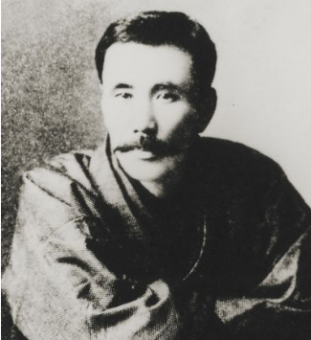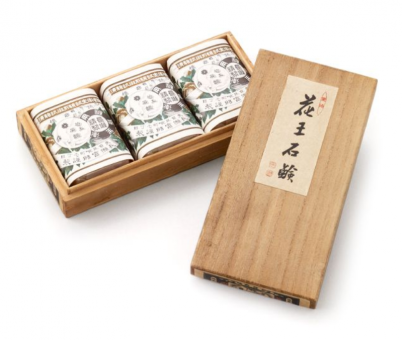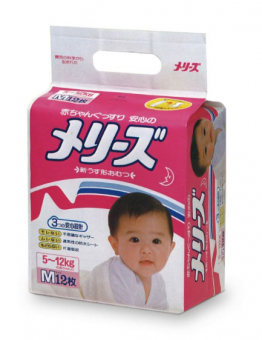Spotlight Kao: The Surprising Science Behind a Century of Soap
November 19, 2018In 1887, a young man named Tomiro Nagase set out on a mission to bring cleanliness and hygiene to daily life in Japan. The Meiji Restoration was transforming the country from an agrarian to an industrial society and with it, a new middle class was emerging. People had a choice of two kinds of body soap at the time: expensive imported luxury soap or cheap, ineffective soap that did nothing to combat growing hygiene issues like illness and infant mortality. Nagase aimed to help solve health problems in Japan’s burgeoning industrial society by inventing an affordable, yet effective soap for daily use.

Tomiro Nagase, credit: Kao Corporation
With this in mind, Nagase set off on a research and development mission that would define the company’s unique approach to innovation for the next 130 years. Nagase hired a team and set up a lab. His team quickly developed expertise in the sciences of chemistry, color and fragrance, and in 1890, introduced Japan’s first high-quality facial soap. Using similarly inventive tactics for advertising and distribution, Nagase broke new ground by promoting Kao Soap on billboards along railway tracks and selling Kao Soap through distributors nationwide. Across Japan, Kao Soap – and a new focus on hygiene and cleanliness — became a part of daily life.

Kao Soap, credit: Kao Corporation
The United States also was undergoing an industrial revolution and there, two young immigrants – one named Procter who made candles and one named Gamble who made soap – found themselves competing over the raw materials to make their wares. Because they had married sisters, they had the good fortune to share a father-in-law who recognized their synergies and suggest they join forces. So Procter & Gamble in the US and Kao in Japan grew in their respective home markets bringing hygiene and cleanliness to a new middle class.

William Procter and James Gamble at the time of P&G founding, credit P&G.
By the 1920s, Procter & Gamble set its sights on expanding overseas, and one of its targets was Kao Soap. This would set the course for a 100-year rivalry and become the impetus for Kao to adopt a policy of embracing change to hold off the behemoth American challenger.
In the years since, Kao’s leadership has tried every business strategy in the book. Early on, Kao followed P&G and expanded internationally. The company purchased well-established brands, acquiring North America’s #1 body lotion, Jergens, in 1988. It added luxury brands to its lineup, in the last two decades buying Curel, Molton Brown and the salon brands John Frieda, Goldwell and Oribe.
But an analysis of Kao’s greatest hits reveals one strategy stands out: its commitment to innovation. Even the earliest accounts recall Nagase’s unique focus on R&D. And after 130 years, Kao’s singular commitment to Nagase’s vision remains, though the firm has refined it to a pursuit they call “interface science.” Nearly all the company’s work comes down to the idea of “surface control.”
“The control of substances opens up unlimited possibilities,” according to the firm’s 2017 annual report. “For example, applying fabric softener to the surface of fibers makes them feel fluffy, and adding a mechanism that breaks down the surface of stains creates laundry detergent. If we thoroughly analyze interface science, we realize that it applies to everything, even enabling precise control of surfaces at the nano level. In fact, the nano surfactant control technology developed for our chemical products is being used in research for our consumer products.” In 2017, the firm also committed to study how it might employ artificial intelligence to advance its research efforts.
Kao invests 4% of its sales to R&D. About half of that goes to what the firm calls “essential research,” generalized scientific research into humans and materials or “the essence of things.” Essential research serves all four of Kao’s divisions with no expectation of results. It is the steady focus on this practice to which the firm credits its longest-selling product lines.
In the 1980s, “Kao’s intense research operations paid off,” according to an article in Reference for Business. “In 1982 Kao entered the cosmetics market for the first time with its Sofina line of cosmetics, and rapidly advanced to the number two position in the market, trailing Shiseido. The following year the company’s Merries brand of disposable diapers far outsold Procter & Gamble’s in Japan because Kao had developed a highly absorbent polymer that reduced diaper rash.”

Merries baby diapers, credit: Kao Corporation
The same report recalls, “one of Kao’s most successful introductions ever, Attack concentrated laundry detergent, came in 1987,” … the result of gathering dirt samples “from around the world for four years in order to discover the bacteria that produces alkaline cellulose, an enzyme that cleans cotton. The researchers then spent two years synthesizing the enzyme through genetic engineering. The resultant detergent was four times as concentrated as cleaners that were being sold; it was in fact the first concentrated laundry soap in Japan. Only six months after introduction, Attack commanded almost 50 percent of the Japanese detergent market. In spite of a price that was much higher than the competition, consumers appreciated the product’s convenience – it was lighter to carry home and took up less space in the cabinet – and that was better for the environment.”

Attack, the soap that launched a revolution in laundry, credit: Kao Corporation
In spite of P&G’s efforts, by 1990, Kao led the Japanese market in eight of its 10 main product categories, according to the report. Today Merries are the #1 baby diaper brand in Japan, a brand Kao has adapted for elderly care. In Japan, sales of adult diapers are expected to surpass baby diapers by 2020.
According to our intangible-adjusted calculations, today Kao does indeed invest nearly 4% of sales in R&D. The company also invests 11% in advertising and firm-specific resources, placing it in the top three consumer staples companies in the world for intangible investments.
One of Kao’s most interesting ambitions for its work in interface science is to share the findings with broader society. In the future, the company aims to help control the spread of disease and pollution, preserve a sustainable food supply and preserve the environment. Kao also is studying new solutions in aging, with a special focus on cognitive disorders, motor impairment and skin disorders.
This Japanese consumer staples Knowledge Leader distributes products in 22 countries and has more than 3,500 employees worldwide.
As of 10/31/18, Kao Corporation and Procter & Gamble were not held in the Knowledge Leaders Strategy.


